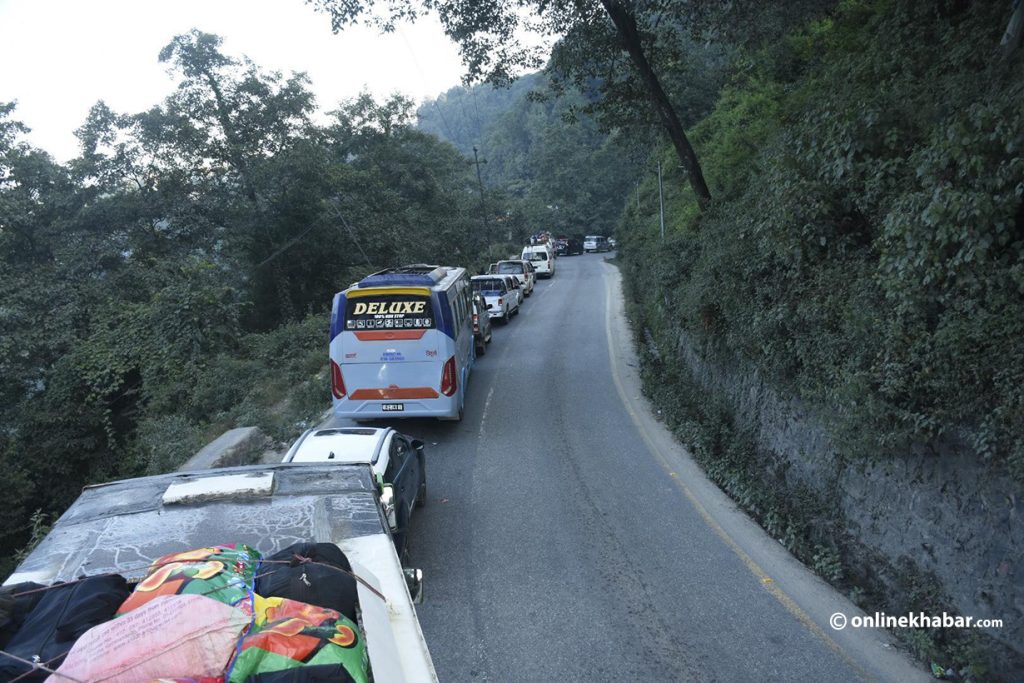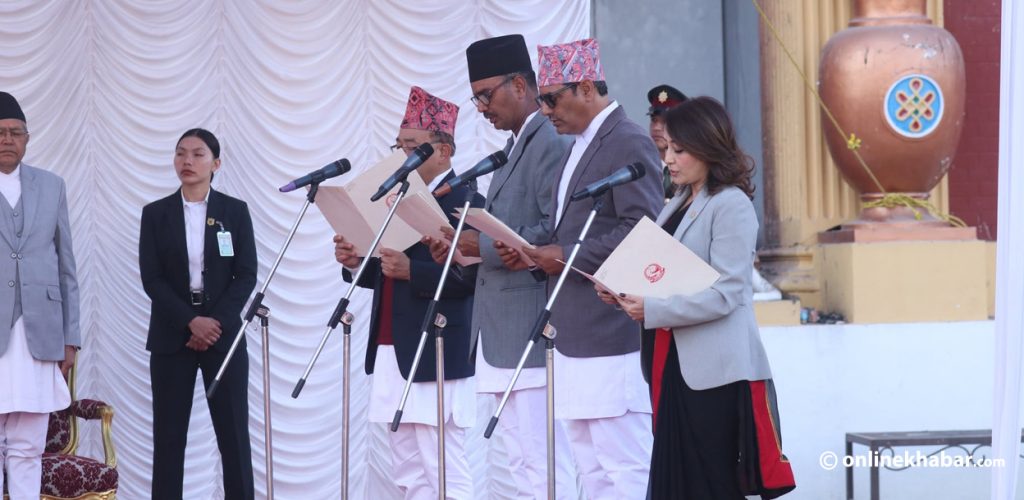
Indeed, the Nepali film industry has made a significant step up in recent ages. As a testament to this progress, Gaun Aayeko Bato, the movie has captured audiences’ attention— reflecting a deeper connection with the themes and narratives that resonate with traditional and contemporary viewers alike.
The film features Dayahang Rai as the father, Pashupati Rai as the mother, and Prasan Rai as the son. In a surprising turn, Gaun Aayeko Bato offers a different character by Dayahang Rai, showcasing a side of his acting that audiences don’t often see— masculine obligation as a breadwinner.
Also, we cannot disregard the character played by Prasan Rai as Bindre. The kid portrays a macho child character, adding to the movie’s authenticity and providing viewers with a genuine experience without the need for superficiality.
The characterisation
With the construction of a road to the village, new opportunities emerge, bringing a sense of excitement and potential change. The arrival of the first bus marks the beginning of this transformation; however, for Maila, this change brings a series of challenges and adversities, as he struggles to adapt to the shifting environment.

Maila finds himself increasingly tangled in this web of change. And on these, he clings to a singular hope: fulfilling his son’s dream of getting a television. The way the entire storyline is depicted feels genuine and soothing, offering a portrayal of the village’s transition.
Every frame of the film is thoughtfully crafted, providing the audience with a sense of connection to their roots. The visuals are colourfully vibrant in cultural detail, immersing viewers in the ambience of village life. The film itself is very simple, allowing the audience to engage with the story effortlessly. Its lack of complexity makes it easy to understand, accessible and enjoyable for all viewers.
The movie is a slow poison. The screenplay unfolds at a slow pace, but its structure allows it to resonate with viewers, stimulating childhood memories. Unlike Nepali films that rely on predictable, often lame jokes, Gaun Aayeko Bato avoids forceful humour; the subtle approach offers a real village experience, free from the contrived comedy that can sometimes derogate from the narrative— allowing the audience to find elements they can relate to.
Thoroughly, the extreme banal buildup of the storyline adds to a melancholy ending: enhancing its emotional impact and leaving a lasting impression on viewers.
—I don’t want the TV, I want you to come back—
The character of Bindre in the film is to whom I relate. His youthful hopefulness and a touch of arrogance reminded me vividly of my childhood. I recall being just as determined as Bindre to
acquire what I desired. One memory surfaced while watching the film was the day my father brought home a toy car for me— a moment etched in my mind with clarity even now.
Resonating personal experiences
A flood of memories, stirring emotions, included, it was difficult to articulate. It transcended mere storytelling to evoke a nuanced nostalgia, resonating with personal experiences and touching deep-seated emotions.
Through Bindre’s character journey, I reflected on my youthful aspirations and the innocence of childhood dreams. These themes reminded me of the purity and simplicity of childhood, where desires and emotions are vivid and unfiltered.
Recognition on the international film stage
The recently released film The Red Suitcase has received recognition on the international film stage, at the Venice Film Festival. This marks a significant step for Nepali cinema, as it moves towards establishing an international standard. Directed by Nabin Subba, Gaun Aayeko Bato has been chosen to screen at the prestigious Toronto International Film Festival 2023 (TIFF), scheduled from September 7-17 in Canada. Additionally, it has secured a spot at the 28th Busan International Film Festival, furthering its presence in international representation.
A film like Gaun Aayeko Bato is a significant achievement in Nepali cinema. Its thoughtful storytelling, compelling performances, and authentic representation of village life make it a standout film that captures the essence of a community in transition. The film’s success lies in its ability to resonate with viewers on a personal level, offering a poignant reflection on the impacts of modernization while celebrating the lasting spirit of tradition.
Even with the emergence of this new film, there appears to be a certain intangible quality. While the film’s storyline, direction, and resonance are top-notch, we must wonder if the Nepali audience is ready to embrace such a slow, simple, yet remarkably affecting film.
Generally, the films that succeed at the box office have predictable and straightforward plots, where the audience does not have to anticipate the scenes— Box office records show that audiences tend to favour comedy and romance genres.
The question remains: are these films merely fleeting trends, or will Nepali audiences eventually adapt to this new wave of cinema? We have to wait days ahead for the answer.



















